How to Turn Off Water to a Toilet (Shut-Off Valve Location & Usage)
Author: Omar Alonso | Editor: Omar Alonso
Review & Research: Jen Worst & Chris Miller
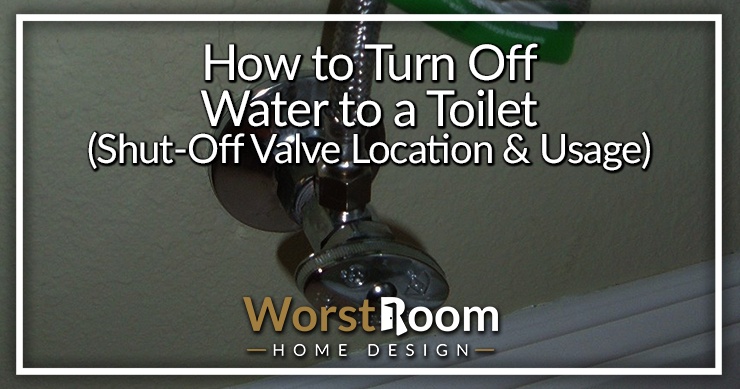
Knowing how to turn off water to a toilet is essential for every homeowner. It can prevent water damage and save you money on costly repairs, but it's also crucial in emergencies like leaks or overflows.
In this blog post, we will explore the different ways to shut off the water supply to your toilet and discuss when and why it's important to do so.
Why It's Important to Know How to Turn Off Water to a Toilet
Knowing how to turn off the water supply to your toilet is important to prevent water damage and flooding, allow for repairs or replacements and save water in case of leaks or emergencies.
Prevent Water Damage & Flooding

Preventing water damage and flooding is one of the key reasons why it's crucial to understand how to turn off the water supply to your toilet. Water damage can wreak havoc on your bathroom, causing costly repairs and replacements that could be avoided by simply knowing how to turn off the water.
In addition to avoiding structural damage, swiftly cutting off the water supply during emergencies can save gallons of wasted water. A continuous leak from an unattended running toilet increases your utility bill and contributes negatively towards valuable resource conservation.
Facilitate Repairs or Replacements
One of the most important reasons to know how to turn off the water supply to your toilet is that it makes it possible to do repairs or replace parts of yours. Some repairs are minor, such as replacing valves which you can do yourself and save yourself the cost of calling out a plumber.
Learning how to turn off the water supply can save you time and stress when dealing with common issues such as faulty flush valves or broken fill valves and other issues that can cause your toilet water to rise and then slowly drain, among other problems.
When renovating or upgrading equipment, turning off the water supply allows for seamless transitions without risking accidents from unexpected surges of residual pressure in pipes.
Save Water in Case of Leaks or Emergencies
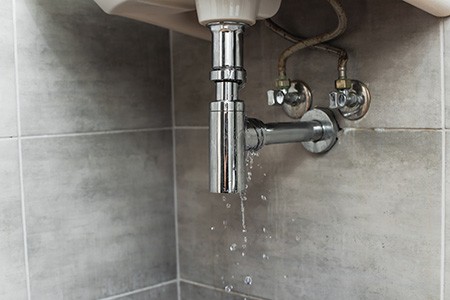
Water conservation should be a priority for every homeowner, and learning how to turn off the water supply to your toilet can significantly contribute to this effort.
Repairing toilet leaks can dramatically reduce water consumption as toilets with malfunctions can waste between 200 to 7200 gallons of water daily, even if it's just a case of the toilet leaking from the tank bolts in drips.
All homeowners should familiarize themselves with their plumbing system so that they can quickly locate their shut-off valves during an emergency. By doing so, you conserve precious water and reduce the risk of costly damages due to flooding or leakages from broken fixtures such as toilets.
It is also a good idea to check all fittings because as much as 10% of your total water usage can be wasted due to undetected leaks. Now let's look at how to turn off water to a toilet so you can reap these benefits.
How to Turn Off Water to a Toilet
Let's look at how to shut off water to a toilet. To turn off the water supply to your toilet, locate the shut-off valve, which is usually located on the wall behind or near the base of it, and turn it clockwise until it can no longer turn.
Locate the Shut-Off Valve
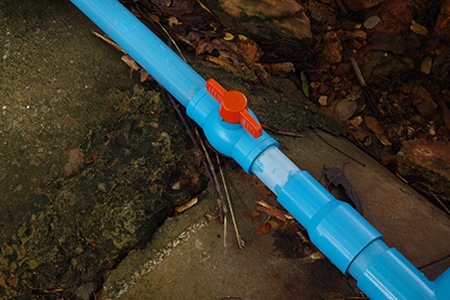
First, you have to find the shut-off valve. This is what you'll check if you have no water to your house suddenly, too, assuming you paid your water bill. It is usually shaped like a football and can easily be turned with a wrench or by hand. The most common location for this valve is at the bottom left-hand side of your toilet, where it connects to the wall via a pipe from the tank.
Turn the Valve Clockwise
Which way to turn the water valve off for a toilet depends on the type. Simply turn the handle clockwise (to the right) until you can no longer move it, which will shut off the water supply to your toilet. This is also how to tell if a valve is open or closed when not dealing with a lever. A lever valve will be closed when the lever is perpendicular to the hose. If it's aligned in parallel then it's open.
It's important to note that some valves may be difficult to turn, especially if they haven't been used in a while. You can use lubricants like WD-40 or pliers or wrenches if necessary, but be careful so that you do not damage the valves.
If your toilet has a round gate valve instead of a lever-type handle, you'll also need to turn it clockwise until it stops in order to shut off the water supply.
Use Lubricant if Needed
If your toilet's shut-off valve is stiff or difficult to turn, use a lubricant spray such as WD-40 to loosen it up. This can make turning the valve much more manageable and prevent damage from forcing it too hard.
To use lubricant, simply apply a generous amount to the valve stem and allow it to sit for a few minutes. Then, try turning the knob again in a clockwise direction until it stops.
It's worth noting that an ounce of prevention is always better than a cure when it comes to plumbing maintenance. Therefore it is a good idea to test your shut-off valves occasionally for stiffness or rust and apply lubricant to them regularly so that it doesn't become rusted in place.
Use a Wrench if Necessary
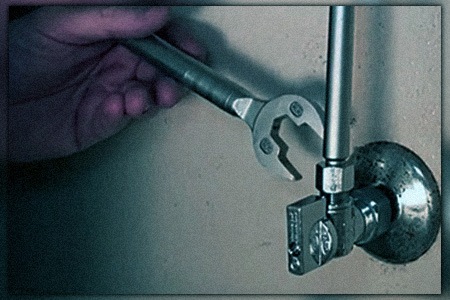
In some cases, turning off the water supply to a toilet may require using a wrench. This is typically necessary if the shut-off valve is stuck or difficult to turn by hand. Nearly any type of wrench will do, you just need the extra leverage and grip.
Before using a wrench, locate the shut-off valve and attempt to turn it off manually first. If this doesn't work, applying lubricant can help loosen up the valve and make it easier to turn.
If that still doesn't work, then using a wrench may be necessary. Remember that having basic plumbing tools like a wrench on hand can come in handy during DIY bathroom maintenance tasks.
And that's how to turn off water to a toilet. You may wonder how long can you turn off water to a toilet. You can do so for days or even weeks if needed, though you would eventually want to run water through your sewage lines.
Situations That Require Turning Off Water to a Toilet
You may need to turn off the water supply to your toilet for various reasons, such as repairing a leaky or malfunctioning fixture, renovating or replacing it entirely, or preventing water damage during a flood or emergency. Some people ask is it bad to shut off water to a toilet and not only is the answer no, but sometimes its necessary.
Repairing a Leaky or Malfunctioning Toilet
A leaky or malfunctioning toilet can be a major inconvenience for any homeowner. Fortunately, many common issues with toilets can be repaired at home without the need for a plumber.
One of the most frequent causes of toilet leaks is a cracked supply line that needs to be replaced.
Another common issue is a faulty flapper valve that is not sealing properly and allowing water to flow into the bowl continuously. In this case, replacing the flapper valve should solve the problem and prevent any more water waste.
Renovating or Replacing the Fixture
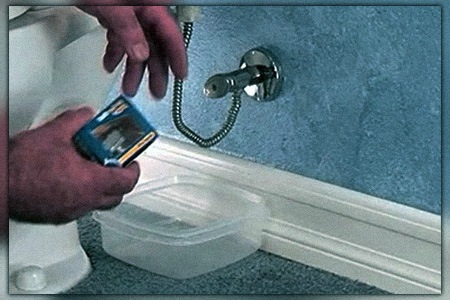
Suppose you are planning to renovate your bathroom or replace the toilet fixture. Shutting off the water supply before starting a renovation or replacement project can prevent any accidental leaks and ensure a clean, hassle-free renovation experience.
To turn off the water supply before replacing or renovating your toilet fixture, simply locate the shut-off valve behind or near the bathroom wall and turn it clockwise until it stops.
If your toilet doesn't have a dedicated shut-off valve, consider installing one to make things easy in the event of repairs in the future. Keep in mind that shutting off the main water supply valves could affect other plumbing fixtures in your home.
Preventing Water Damage During a Flood or Emergency
Preventing water damage during a flood or emergency is critical for the safety and preservation of your home. Knowing how to turn off the water supply to your toilet can help avoid costly repairs and protect against potential health hazards.
Natural disasters, pipe leaks, or other emergencies can cause significant damage to homes that are not prepared. By regularly inspecting plumbing systems and shutting off valves in case of an emergency, you can prevent further damage from occurring.
In case of an overflowing toilet, it is essential to turn off the valve at its source immediately to halt any additional flooding.
During times of flooding, taking proactive measures beforehand to shut off the water and prevent soil saturation near the pipes can prevent the pipes from bursting due to the increased stress placed on them due to the excess moisture content in the soil layers.
That’s How to Turn Off Water to a Toilet
Congratulations! You now know how to turn off the water supply to your toilet. Turning off the valve can prevent water damage, facilitate repairs or replacements, and save you gallons of water during leaks or emergencies.
Remember that it's important to locate your shut-off valve, turn it clockwise until it stops moving, and use lubricant or a wrench if necessary. Whether doing repairs or renovating your bathroom fixtures, shutting off the toilet water supply is an essential skill for any homeowner. And that's how to turn off water to a toilet.



